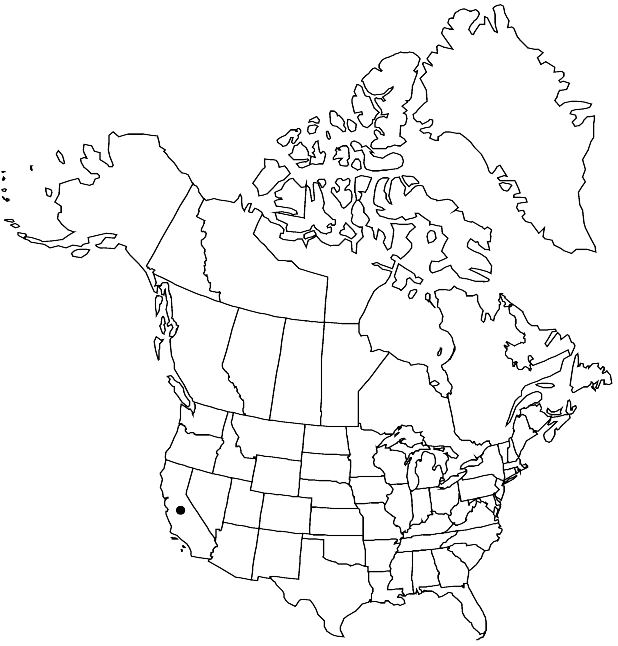Draba carnosula
in H. G. A. Engler, Pflanzenr. 89[IV,105]: 82. 1927.
Perennials; (loosely cespitose); caudex branched (somewhat surculose, with persistent leaf bases, branches sometimes terminating in sterile rosettes); scapose. Stems unbranched, 0.3–1.2 dm, glabrous throughout. Basal leaves rosulate; petiolate; petiole (persistent, midvein prominent), ciliate, (trichomes sparse, short-stalked, 2–4-rayed, sometimes with simple ones, 0.2–0.5 mm); blade (somewhat fleshy), oblanceolate or spatulate to obovate, 0.3–1.5 cm × 1.5–5 mm, margins entire, (pubescent as petiole), surfaces glabrous. Cauline leaves 0. Racemes 2–6-flowered, ebracteate, elongated in fruit; rachis not flexuous, glabrous. Fruiting pedicels divaricate-ascending, straight, 3–8 mm, usually glabrous, rarely trichomes simple. Flowers: sepals ovate, 3–4 mm, glabrous; petals yellow, oblanceolate, 5–7 × 1.3–2 mm; anthers oblong, 0.7–0.9 mm. Fruits lanceolate to elliptic-lanceolate, plane, strongly flattened, 10–23 × 4–6 mm; valves (each with distinct midvein), glabrous; ovules 8–12 per ovary; style 2–3 mm. Seeds (broadly winged), orbicular, 3–4.5 in diam.; (wing 1–1.5 mm wide).
Phenology: Flowering Jun–Jul.
Habitat: Open rocky hillsides
Elevation: 2800-3100 m
Discussion
Of conservation concern.
Although Draba carnosula was reduced by Hitchcock to a variety of D. howellii, it differs significantly by having leafless flowering stems, 2–6-flowered racemes, and broadly winged seeds 3–4.5 mm in diam. Draba howellii almost always has 1–3-leaved stems, (5–)7–18(–25)-flowered racemes, and not winged, distally appendaged seeds 1–1.6 mm in diam. Draba carnosula is known only from a few collections from Mount Eddy in Trinity County and the north side of Mount Shasta in Siskiyou County.
Selected References
None.

